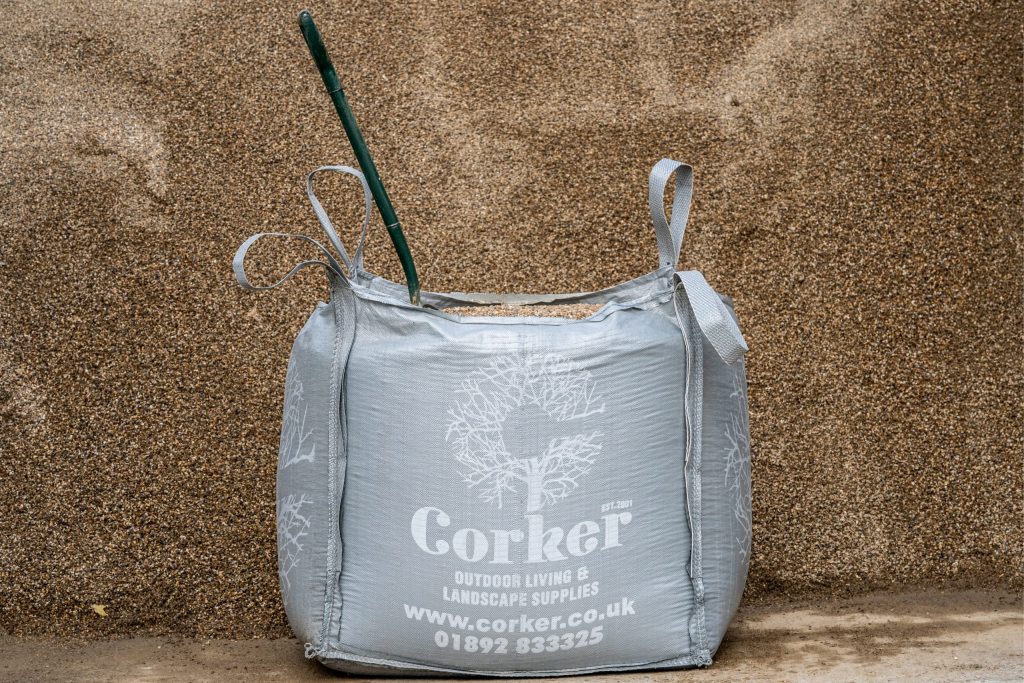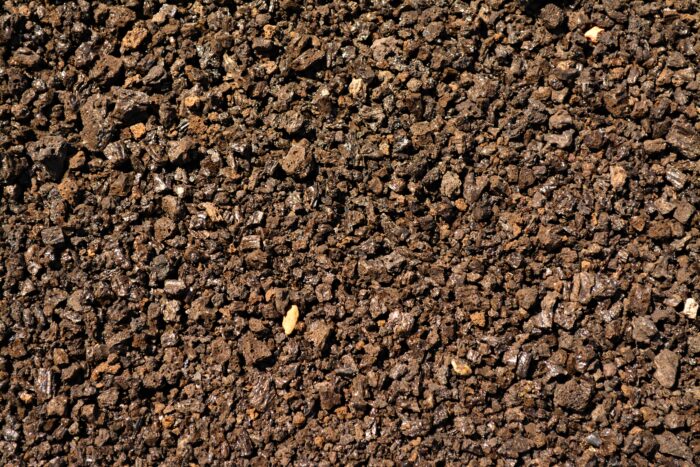What is horticultural grit? It’s not only a good question, but exactly what we’ll be exploring in this blog! In short, it’s small, washed or treated stone particles, typically 1-4mm in size, although it can measure up to 6mm. With a neutral pH, it can lend itself to various uses. This also makes it popular for making up potting mixes and can be used commercially to make potting mixes more free draining. It can also be added to heavy clay soils to open them up and improve drainage and aeration.
In this blog, we’ll look at how horticultural grit is made and its various uses in more detail.
What makes up horticultural grit
Let’s start with the base elements. Typically, it is made from crushed granite or limestone. These types of rock are preferred, as they more naturally break down into pieces with angular edges. This gives it a greater surface area despite its small size, enabling better drainage.
Angular, quartzite stone is also a popular choice for horticultural grit, although this is more typically used for decorative applications. This is because it has an attractive range of colours, including maroon, white, brown, and pink. Many gardeners choose it to decorate pots holding cacti or alpines, where drier conditions are more favourable. Its aesthetic qualities are enhanced when wet, making it equally popular for decorating rockeries, water features, and ponds.
Clean and neutral
Horticultural grit is washed thoroughly to remove all elements of lime, and this is a key part of what defines horticultural grit. Having a neutral pH is important for its use in soil. With a neutral pH, it can be used in any soil type without making it more acidic or alkaline unintentionally.
Why use horticultural grit
Horticultural grit can also be used to improve soil structure. The angular surfaces and slight variations in size and shape help create small pockets in the soil, which are essential for holding air and water. It’s an ideal product for opening up heavy clay soils and helps reduce clumping in sticky clay soils too.
You’ll also find it a very popular product with gardeners because it is easy to rake and work with and is a versatile, excellent value material that is extremely long lasting.
How to use horticultural grit
Adding horticultural grit to your compost can also stop the soil sticking together and enables excess water to freely drain away. Alternatively, mixing one-part loam to one-part horticultural grit, and one-part leaf mould or coir, makes for an ideal planting mix for a rockery or rock garden. For aquatic planting in ponds, applying a thin layer of horticultural grit to the top of the plant container will prevent fish from stirring up the soil. And if you’re growing seeds in trays, adding a fine sprinkling of grit will prevent them from drying out as they germinate.
As we mention above, it is also popular with those who grow alpines. This is because these types of plants are typically native to rocky soils in sunny locations, conditions that can easily be replicated with containers and the help of horticultural grit. For alpine planting, use equal parts compost and horticultural grit and fill to within 12cm of the container’s rim. Level off around your plant, then finish with an even top layer of grit to help prevent leaves from rotting.
It can also be used to build a scree garden. Screes occur in mountainous areas, and a scree bed/garden simply attempts to emulate these natural features. In nature, they are created by the freezing and thawing of rock faces, which then breaks down into material of varying sizes. This loose material reduces the angle of steepness of a mountainside over time too. However, when creating a scree garden, the focus is on preventing water loss and inhibiting weeds from germinating. For similar reasons, smaller horticultural grit can also be used to top-dress borders, potted plants, and hanging baskets.
The scree will be used to replace the subsoil and creates a layer the topsoil can sit on. For a scree garden, you should be looking to create a topsoil made up of two parts topsoil, two parts horticultural grit, and one-part horticultural or sharp sand. You can also top dress your scree garden with a further layer of dressing grit, approximately 3-4cm deep.
Alternatives to horticultural grit
Outside of the UK, especially in the US and Continental Europe, horticultural grit is a less defined product, and often difficult to get hold of. Many gardeners and landscapers choose to simply use sharp sand in its place. This has been treated in a similar way, having been washed and graded, and is suited for many of the same applications – enabling better drainage and soil aeration.
For this reason, sharp sand is also known as horticultural sand, coarse sand, or quartz sand. Pea shingle and decorative stone chippings also make for an acceptable alternative, especially when being used for more aesthetic applications.

FAQs
Q. How long does horticultural grit last before it needs replacing?
A. Horticultural grit is very durable and doesn’t degrade easily. It generally lasts indefinitely unless it becomes significantly dirty or contaminated with organic material. In most gardening applications, horticultural grit can be reused several times after washing.
Q. What is horticultural grit?
A. Horticultural grit is small, washed, or treated stone particles typically ranging from 1-4mm in size, and occasionally up to 6mm. Boasting a neutral pH, it’s a versatile material used in gardening, particularly for improving drainage and aeration in various soil types.
Q. How is horticultural grit made?
A. Primarily, horticultural grit is made from crushed granite or limestone, liked for their natural tendency to break into angular pieces. This angular shape enhances the grit’s surface area, promoting improved drainage. Quartzite stone is also a popular choice, often used for its decorative appeal in various garden features.
Q. Why should gardeners use horticultural grit?
A. Using horticultural grit improves soil structure by creating small pockets that hold air and water, essential for healthy plant growth. It’s particularly effective in breaking up heavy clay soils, reducing soil compaction, and increasing the soil’s drainage capacity. Its ease of use and longevity make it a staple in garden sheds.
Q. What are the best ways to use horticultural grit?
A. Mix horticultural grit with compost to prevent soil compaction in pots or use it as part of a planting mix for rockeries by blending it with loam and leaf mould. It’s also ideal for aquatic planting to keep substrates stable and for alpine plants to emulate their native rocky conditions. Additionally, a layer of horticultural grit on seed trays can help retain moisture during seed germination.
Q. How does horticultural grit affect soil pH?
A. Horticultural grit generally has a neutral pH and does not affect the soil’s acidity or alkalinity, making it suitable for use in a variety of soil types without altering their chemical balance.
Q. Can you use sharp sand instead of horticultural grit?
A. Yes, sharp sand can be used as an alternative to horticultural grit, especially in scenarios where improving soil drainage and aeration is needed. Sharp sand, being coarse and well-draining, is particularly useful for garden beds and containers that house plants requiring excellent drainage. However, it’s slightly less stable structurally than horticultural grit and may compact over time, so it’s ideal to assess the specific needs of your garden or planting project when choosing between the two.
Summary
The important thing is not to get too bogged down with the nitty gritty – pun intended. There are a wide range of different sized horticultural grits available on the market and from garden centres, but they almost all do the same job. And they are almost always washed, graded pieces of fragmented stone used to enhance drainage. Anything sized between 2-4mm is fine for general use. But as always, you can choose what best suits your garden and plant types best. If you’re not sure, the Corker team are always on hand to give the best possible advice. Get in touch today if you’d like further advice or would like to know more about our range of horticultural grit and sand.


